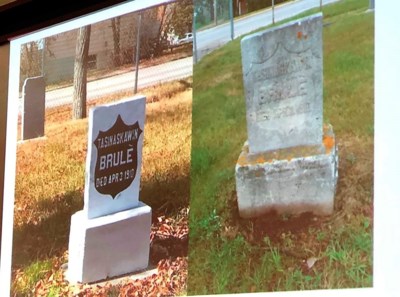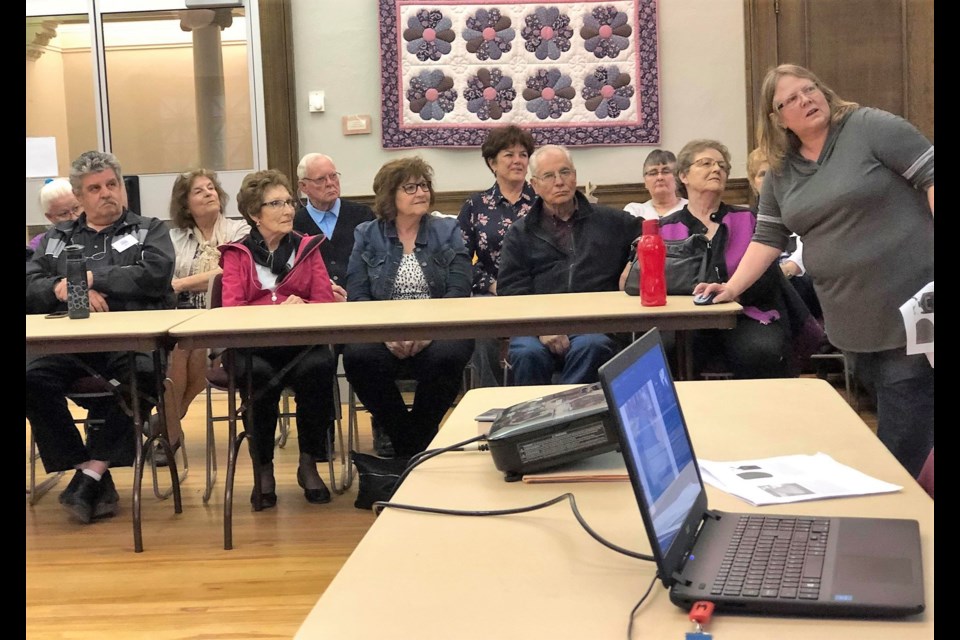Moose Jaw is steeped in history and the Saskatchewan Genealogical Society shared some of the city’s oldest history with a virtual tour of the Moose Jaw Cemetery.
Susan Gardner from the Saskatchewan Genealogical Society hosted the tour by adapting a script from Tourism Moose Jaw and combining photos of the gravestones along with the people buried there and images of their families and from their lives.
Gardner’s virtual tour included 20 graves out of the 7,000 people who are buried in the oldest formal burying grounds in the city located on Ninth Ave. NE and Caribou St. E.
“The Moose Jaw Cemetery mainly stands out for a very specific reason and that’s because of its lack of segregation. Back in the early 1900s, different cemeteries allowed specific groups or people for burial,” Gardner said. “Since its establishment, this cemetery allowed almost all Moose Jaw residents. No matter what race, religion or economic background you came from you were able to buy a plot. Furthermore, the cemetery was not sectioned off according to those factors.
“Only one group was excluded, the First Nations, and that didn’t last long thanks to two incredible women.”
 The restored grave stone of Tasinaskawin Brule, left, and the original stone, right. (Matthew Gourlie photograph)
The restored grave stone of Tasinaskawin Brule, left, and the original stone, right. (Matthew Gourlie photograph)Tasinaskawin Brule was the wife of Chief Black Bull from the Lakota Sioux nation. Black Bull fought with Sitting Bull against General Custer at the Battle of the Little Big Horn and then they fled to Canada. Black Bull and 300 from their tribe settled in Moose Jaw and never left.
Brule and a young woman named Annie Wallis became best friend and Wallace fought to make Brule’s dying wish to be buried in the Moose Jaw Cemetery a reality. After the City refused to sell Wallis a grave plot for Brule because of her heritage. Undeterred, Wallis went to the provincial government and they overturned the restrictions on the First Nation’s ability to purchase plots.
Brule is the only Aboriginal person buried in the cemetery and her gravestone mysteriously disappeared in the past few years. Ron Papandrea, the author of a book on the Lakota Sioux who stayed in Canada, purchased a new headstone for Brule last year.
“So many odd, interesting and sad stories collect here in the graveyard,” Gardner said.
The tour highlighted both famous local citizens and also those with intriguing stories like the unsolved murder of M. Miriam Kent who was poisoned while she pregnant with her husband the most likely culprit.
There is maybe no one less fortunate that Henry Battle and his family members who share a large obelisk headstone with names of multiple family members on each side.
Battle was actually in the cemetery on the day he died. When a lightning storm struck, he sought immediate shelter. Incredibly, lightning struck the house, travelled through the chimney and struck Battle and two of the children seated with him at the table, killing all three. Three months after Henry’s death, his son died in a lawnmower accident.
Henry’s 12-year-old brother Edgar Battle was the first person buried in the cemetery in 1889. Battle’s cousin, David Hawke, was also struck by lightning and killed, and he was the second person buried in the cemetery, two weeks after Edgar. The next year, five members of the Battle family died.
Lewis Rice, famed for photographing much of Moose Jaw’s early history, rests in the cemetery,
“His presence made an immeasurable impact on how Moose Jaw formed over the years and because of this, the City decided to paint a mural in his honour. They took a few of his more iconic photographs and wanted them to send a photo of Lewis, but discovered that there are no known photos of him to be found. Selfies were not a thing.”




